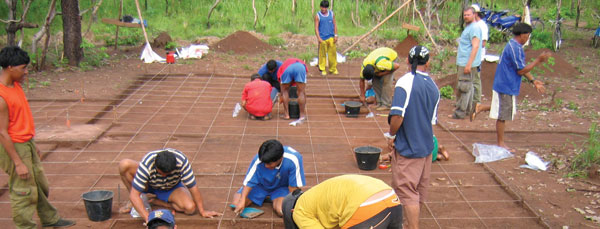Extracts

Amazonian Settlements Rivaled Greece, Europe
Aaron Hoover
They aren’t the lost cities early explorers sought fruitlessly to discover.
But ancient settlements in the Amazon, now almost entirely obscured by tropical forest, were once large and complex enough to be considered “urban” as the term is commonly applied to both medieval European and ancient Greek communities.
So said a paper in the journal Science last August co-authored by anthropologists from the University of Florida and Brazil, and a member of the Kuikuro, an indigenous Amazonian people who are the descendants of the settlements’ original inhabitants.
“If we look at your average medieval town or your average Greek polis, most are about the scale of those we find in this part of the Amazon,” said Mike Heckenberger, a UF professor of anthropology and the lead author of the paper. “Only the ones we find are much more complicated in terms of their planning.”
The paper also argued that the size and scale of the settlements in the southern Amazon in North Central Brazil means that what many scientists have considered virgin tropical forests are in fact heavily influenced by historic human activity.
The communities are now almost entirely overgrown, but Heckenberger said that members of the Kuikuro, a Xinguano tribe that calls the region home, are adept at identifying telltale landscape features that reveal ancient activity. These include, for example, “dark earth” that indicate past human waste dumps or farming, concentrations of pottery shards and earthworks. Also assisted by satellite imagery and GPS technology, the researchers spent more than a decade uncovering and mapping the obscured communities.
The new paper reports that the settlements consisted of clusters of 150-acre towns and smaller villages organized in spread-out “galactic” patterns.
None of the large towns was as large as the largest medieval or Greek towns. But as with those towns, the Amazonian ones were surrounded by large walls — in their case, composed of earthworks still extant today. Among other repeated features, each Amazonian settlement had an identical formal road, always oriented northeast to southwest in keeping with the mid-year summer solstice, connected to a central plaza.
The findings are important because they contradict long-held stereotypes about early Western versus early New World settlements that rest on the idea that “if you find it in Europe, it’s a city. If you find it somewhere else, it has to be something else,” Heckenberger said.
“They have quite remarkable planning and self-organization, more so than many classical examples of what people would call urbanism,” he said.
But the research is also important because it means at least one area of “pristine” Amazon has a history of human activity. That could change not only how scientists assess the flora and fauna, but also how conservationists approach preserving the remains of forest so heavily cleared it is the world’s largest soybean producing area. “This throws a wrench in all the models suggesting we are looking at primordial biodiversity,” Heckenberger said.
Around the communities the scientists found dams and artificial ponds
that indicate inhabitants farmed fish near their homes. They also found the remnants of open areas and large compost heaps suggesting widespread near-town cultivation.
The research has been funded by the National Science Foundation.